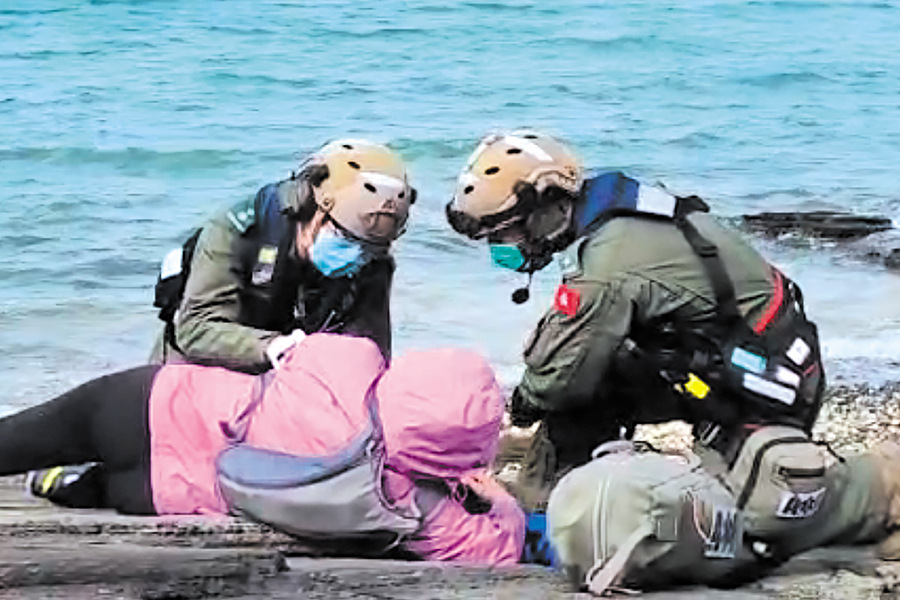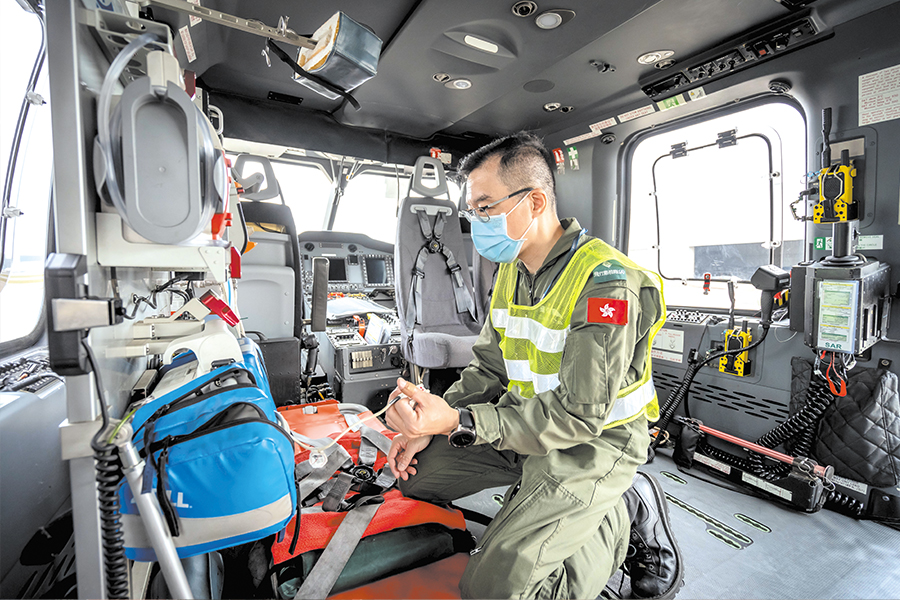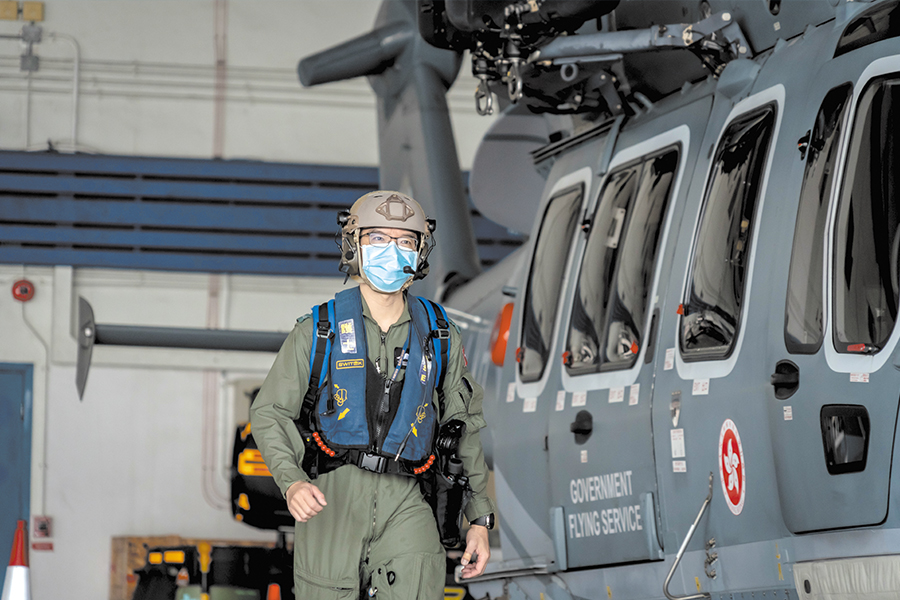Flying to the rescue
 It was on a Sunday afternoon when the Airbus H175 Cheetah helicopter touched down on A Ma Wan beach of Tung Ping Chau where a woman had injured her ankle while out hiking. William Chan jumped out of the helicopter with his equipment and quickly provided the rescue procedures (photo below). After ruling out the serious mechanism of injuries, and the vital sign was stable, he applied a vacuum splint to stabilize the woman’s injury and prescribed Penthrox Inhaler for pain relief, and then escorted her to hospital. For William, it was a routine task as an air medical nursing officer.
It was on a Sunday afternoon when the Airbus H175 Cheetah helicopter touched down on A Ma Wan beach of Tung Ping Chau where a woman had injured her ankle while out hiking. William Chan jumped out of the helicopter with his equipment and quickly provided the rescue procedures (photo below). After ruling out the serious mechanism of injuries, and the vital sign was stable, he applied a vacuum splint to stabilize the woman’s injury and prescribed Penthrox Inhaler for pain relief, and then escorted her to hospital. For William, it was a routine task as an air medical nursing officer.
 William, who works as a Nurse Consultant in the Accident and Emergency (A&E) Department of New Territories West Cluster, was inspired to serve the community and help others since his participation in Scouting activities in his childhood. In 2003, his classmate in nursing school tragically passed away with SARS. That experience made him realise the fragility and preciousness of life, and he was quick to volunteer when it happened that the Government Flying Service (GFS) was recruiting air medical nursing officers. Since then, he has flown out and helped people in need with his professional knowledge.
William, who works as a Nurse Consultant in the Accident and Emergency (A&E) Department of New Territories West Cluster, was inspired to serve the community and help others since his participation in Scouting activities in his childhood. In 2003, his classmate in nursing school tragically passed away with SARS. That experience made him realise the fragility and preciousness of life, and he was quick to volunteer when it happened that the Government Flying Service (GFS) was recruiting air medical nursing officers. Since then, he has flown out and helped people in need with his professional knowledge.
Turbulent times during the air rescue
Life in the air seemed unrestrained but it took a degree of adjustment. “At the very beginning, I wasn’t used to riding in helicopters, and I even vomited during a search and rescue (SAR) operation when we were hovering for a long time,” William recalls. Since then, he has always carried sick bags with him. “I realised I had to ensure my own safety before rescuing people, and I had to strengthen my physical training in order to meet the various challenges when going up and down mountains,” he says.Air rescue is more challenging than other forms of volunteer work. “Air medical nursing officers must pass rigorous trainings and assessments, and need professional qualifications and physical requirements. We have to maintain continuous learning to be capable of taking part in different kinds of rescue,” William explains.
One benefit of the air rescue work is that it has enhanced William’s emergency nursing skills. It is similar to A&E work in that both tasks involve solving problems and evaluating the priority of the patient’s status in a speedy manner. “In a hospital, there are multiple doctors and nurses working together to resuscitate the patient. But during an air rescue, the environments we face are very diverse, such as the cliff and ramps,” William says. “Sometimes there is no doctor, so I have to proceed with emergency medical procedures like airway management and drug injection independently, which is the most direct, effective, and valuable form of nursing training.”

Be careful and independent in second-by-second decisions
On one occasion, William went out on a SAR operation in Pat Sin Leng with only the information that a patient was suffering from dizziness. When he found the patient, William discovered he had suffered a cardiac arrest. The rescue plan was changed immediately and William performed chest compression and delivered a shock by AED, inserted a I-gel to maintain airway, set up an IV line, injected Adrenaline and Amiodarone according to VF algorithms, secured the patient in a basket stretcher and winching up back to the helicopter. “Air crewman officers and I usually have to complete the most urgent procedures within 10 minutes and transfer the patient to the hospital as soon as possible,” William explains. “Therefore, we have to keep calm and make careful judgements and communications.”Working almost 20 years as an air medical nursing officers, William had experienced injuries. The voluntary work has also meant sacrificing family time at weekends but earned a close bond with the GFS full-time team members, therefore William is still dedicated to his duties. The time he enjoys most is when the helicopter touches down at the end of a busy day of rescue missions. “When I see the sun sets slowly, I can recall what made me choose a career in nursing, and that motivates me to overcome any difficulties,” he says. “Life doesn't always go as planned, so let's think more positively about the good things in life.”
